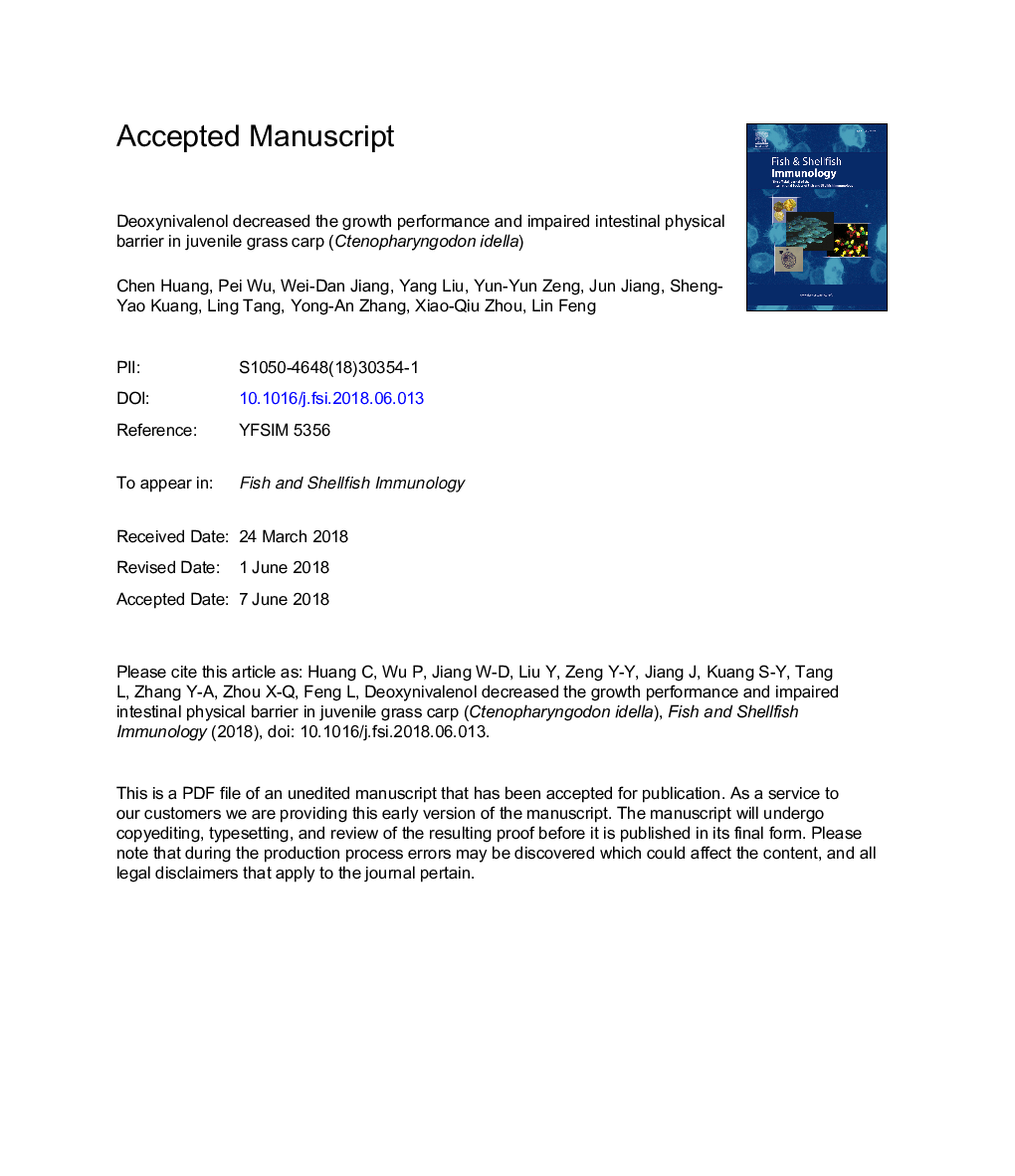| Article ID | Journal | Published Year | Pages | File Type |
|---|---|---|---|---|
| 8498236 | Fish & Shellfish Immunology | 2018 | 42 Pages |
Abstract
Deoxynivalenol (DON) is one of the most common mycotoxin contaminants of animal feed worldwide and brings significant threats to the animal production. However, studies concerning the effect of DON on fish intestine are scarce. This study explored the effects of DON on intestinal physical barrier in juvenile grass carp (Ctenopharyngodon idella). A total of 1440 juvenile grass carp (12.17â¯Â±â¯0.01â¯g) were fed six diets containing graded levels of DON (27, 318, 636, 922, 1243 and 1515â¯Î¼g/kg diet) for 60 days. This study for the first time documented that DON caused body malformation in fish, and histopathological lesions, oxidative damage, declining antioxidant capacity, cell apoptosis and destruction of tight junctions in the intestine of fish. The results indicated that compared with control group (27â¯Î¼g/kg diet), DON: (1) increased the reactive oxygen species (ROS), malondialdehyde (MDA) and protein carbonyl (PC) content, and up-regulated the mRNA levels of Kelch-like-ECH-associated protein 1 (Keap1: Keap1a but not Keap1b), whereas decreased glutathione (GSH) content and antioxidant enzymes activities, and down-regulated the mRNA levels of antioxidant enzymes (except GSTR in MI) and NF-E2-related factor 2 (Nrf2), as well as the protein levels of Nrf2 in fish intestine. (2) up-regulated cysteinyl aspartic acid-protease (caspase) -3, -7, -8, -9, apoptotic protease activating factor-1 (Apaf-1), Bcl2-associated X protein (Bax), Fas ligand (FasL) and c-Jun N-terminal protein kinase (JNK) mRNA levels, whereas down-regulated B-cell lymphoma-2 (bcl-2) and myeloid cell leukemia-1 (Mcl-1) mRNA levels in fish intestine. (3) down-regulated the mRNA levels of ZO-1, ZO-2b, occludin, claudin-c, -f, -7a, -7b, -11 (except claudin-b and claudin-3c), whereas up-regulated the mRNA levels of claudin-12, -15a (not -15b) and myosin light chain kinase (MLCK) in fish intestine. All above data indicated that DON caused the oxidative damage, apoptosis and the destruction of tight junctions via Nrf2, JNK and MLCK signaling in the intestine of fish, respectively. Finally, based on PWG, FE, PC and MDA, the safe dose of DON for grass carp were all estimated to be 318â¯Î¼g/kg diet.
Keywords
Related Topics
Life Sciences
Agricultural and Biological Sciences
Aquatic Science
Authors
Chen Huang, Pei Wu, Wei-Dan Jiang, Yang Liu, Yun-Yun Zeng, Jun Jiang, Sheng-Yao Kuang, Ling Tang, Yong-An Zhang, Xiao-Qiu Zhou, Lin Feng,
